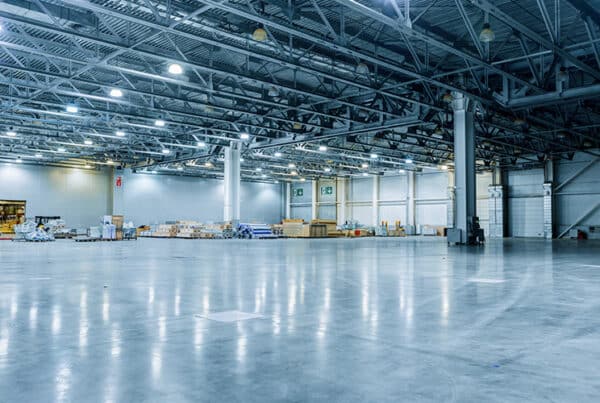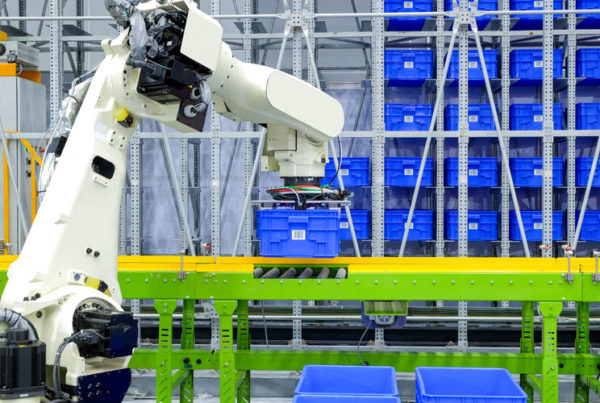Supply Chain as a Service (SCaaS) is best understood as the division of the supply chain into chunks that can be outsourced to, or accessed by, third parties. It allows companies to scale their supply chains up or down while giving access to variable price structures and resources that would otherwise be hard to find.
For smaller companies and startups – and even larger companies in need of temporary services – SCaaS gives instant access to industry-leading experts and infrastructure while allowing these companies to avoid the costs and risks of developing a vertical supply chain.
At the same time, SCaaS enables companies with extra capacity to maximize profits on their investments and contract operations by offering a portion of that capacity on the open market.
SCaaS has created a complex, immanently flexible Supply Chain Management (SCM) system capable of meeting nearly any logistical need – from complicated to mundane.
At PeakLogix, our experts have spent the last several decades working with the modular, scalable, smart logistics solutions that have evolved into SCaaS. We have the tools, expertise, and partnerships to help you navigate this maturing market.
Basic supply chain components
SCaaS breaks the supply chain into components that companies can specialize in. For discussion’s sake, we look at six of these stages, understanding that many things are happening behind the scenes. For example, between each element we discuss, goods have to be tracked and controlled and their movements and storage properly documented, often in multiple languages. All of these are ripe opportunities for SCaaS.
1 – Extraction and procurement of raw goods
The supply chain begins with the extraction of raw goods. Before SCaaS made these processes more transparent, this aspect of the supply chain was often off the radar of many B2C companies.
2 – Refining of raw goods into basic components
Refinement was another stage of the supply chain hidden from most B2C companies before the advent of cloud computing, blockchain technologies, and smart devices. Today, all stakeholders in the supply chain can monitor goods and any costs associated with services, allowing judicious companies to create the best possible partnerships throughout the supply chain.
3 – Manufacturing and assembly of components into products
Even if a company, working with a traditional supply chain, has a great relationship with their manufacturers, SCaaS can improve those collaborations. The granular feedback and real-time updates that SCaaS provides allow for better management of lead times, inventory levels, quality checks, delivery schedules, and more.
4 – Warehousing goods
Raw goods, refined components, and manufactured products all have to be warehoused. With cloud computing, blockchain technologies, and smart devices, the staging of goods in warehouses becomes more transparent, load movements better streamlined, and the use of the cubic space maximized, allowing for a more efficient, robust, and resilient supply chain.
5 – Selling product
For many companies, selling goods or services will remain a core competency they will keep in-house. But companies dedicated to the SCaaS business model won’t shy away from the idea that even this most fundamental part of their business can be improved by collaborating with world-leading experts on an as-needed basis.
6 – Distribution of goods to the end-user
Online sales in the US reached $791.7 billion in 2020 – nearly 20% of total retail sales. By 2025, total ecommerce sales in the US are projected to reach $1.33 trillion. At the same time, the last mile of delivery to homes and small offices costs nearly 30% of the total cost of transportation. This growth in online sales, coupled with distribution costs, will be unsustainable for companies that can’t adapt to SCaaS.
Challenges to creating a SCaaS business model
The supply chain is a tight network of discrete processes. The technologies each of these processes employ have advanced to the point that maintaining expertise in all of them is a challenge. Instead, successful companies frequently select core competencies in which to specialize and round out their skillsets by creating collaborations with specialists in other competencies.
These collaborations will allow for a finer balancing of the costs, services, risks, and outcomes than vertical supply chains can provide.
However, there are common challenges that partnerships need to address for a successful end-to-end supply chain.
1 – Real-time data and tracking
Perhaps the greatest need for a functional SCaaS business model is data transparency. SCaaS incorporates cloud computing, big data, blockchain technologies, and smart devices to give all stakeholders real-time feedback throughout the supply chain. As you move to the SCaaS business model, you’ll want to make sure that both you and your partners have the right technologies in place to facilitate communication.
2 – Increasingly complex networks
The market is constantly becoming more complex, adding new websites, software, warehousing space, delivery services, and more. A planned approach to outsourcing will first discover which services should be kept in-house and then find partners who provide the services you need while being agile enough to keep up with the changing markets.
3 – Supply chain resilience
One lesson of the COVID-19 pandemic was the realization that older SCM models maximized efficiency at the cost of resiliency. In contrast to vertical supply chains, SCaaS creates a modular, scalable bank of resources. Third-party services can be combined when needed or serve as secondary or even tertiary service suppliers. As the market moves to SCaaS business models, supply chain managers should include enough resiliency to withstand short-term demand shocks.
4 – Designing an end-to-end system
With a world of resources at your disposal, designing an end-to-end system can leave a supply chain manager with choice overload. As with any task, it’s important to break this into chunks. Define your core competencies that will be kept in-house. Then look for areas where your company will get the most benefit from a third party. And then research and develop partnerships with industry-leading experts whose skills match your needs.
Converting to SCaaS isn’t a question of if or when, but of what and how much
Over the next several years, SCaaS in North America is expected to grow at a CAGR of 7.5% to $7.85 billion.
Part of this growth will come from the increased use of online shopping, particularly with mobile devices in emerging markets. Another major component is the technologies that enable the use and transparency of big data – including cloud computing, blockchain technologies, and the Internet of Things.
Companies that adopt the SCaaS business model benefit from the ability to instantly scale their supply chains up or down, as needed, with neither the up-front nor operational costs of creating vertical supply chains. They gain access to variable price structures and world-leading expertise that allow profits to be maximized and costs minimized.
Because these benefits incur no long-term costs, every company that finds itself needing a temporary bump in services will incorporate SCaaS into their business model.
The most successful companies will see SCaaS for its value and maximize the benefits they can gain from it.
Want to learn more about SCaaS and how it can benefit you? Contact us to talk details and strategies!
Increasing storage capacity and utilization with semi-automated deep lane storage.
PeakLogix designed a plan that increased the realized capacity of one client by more than 60% and increased its utilization rate to nearly 80%. In addition, the client now benefits from a clear receiving dock, which facilitates their ability to unload additional inventory that can be ordered more efficiently.





